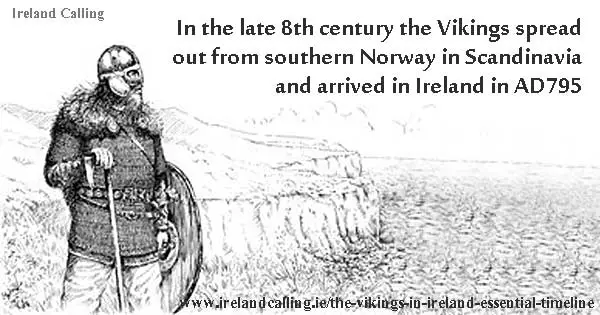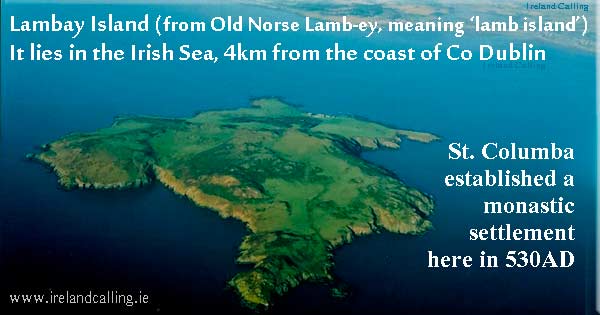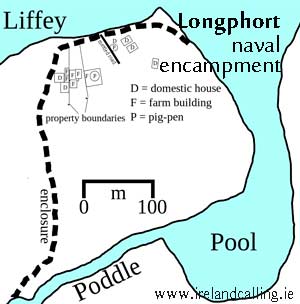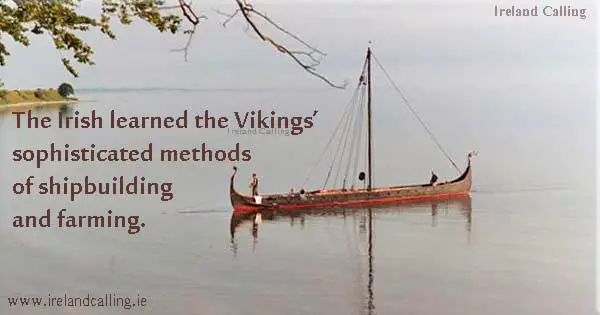In the late 8th century the Vikings spread out from what is now southern Norway in Scandinavia and headed towards Britain, France and eventually Ireland.

They viciously attacked Ireland for decades and sailed away with whatever treasure they could find, until they eventually settled. They would go on to change the face of the country forever and helped to modernise the social structure of the native Gaels.
They boasted the most impressive fleet of ships of the era. They were well organised and able to carry out successful raids in the north of England, terrorising the population.

In AD 795, the Vikings reached Ireland. They attacked a monastery on Lambay Island, close to what is now Dublin Bay. They pillaged the wealthy monastery for all the treasure it had.
Norse and Danish Vikings
The Vikings continued to raid monasteries in Ireland for several decades. Over time Danish Vikings also headed to Ireland in search of as much loot as they could find.
The Norse Vikings were active along the southern and eastern coast of Ireland while the Danes travelled further in land. The Irish differentiated between the two by hair colour. They called the Norse Vikings Fionn Ghaill, which meant ‘fair foreigner’ and the Danes were known as Dubh Ghaill, meaning ‘black foreigner’.
The Vikings’ behaviour didn’t go unnoticed by the native Irish and it wasn’t long before the local leaders were also looting monasteries in search of their own riches. The Irish also learned from the Vikings’ more sophisticated methods of shipbuilding and farming.
Viking settlement was the early stages of Dublin
By 841 the Norse Vikings had set up a permanent home in Ireland and developed a living settlement (or longphort) on the banks of the River Liffey. It was an ideal spot as they could dock their ships in the river and they had a quick route to the Irish Sea.

This settlement was the very early stages of what would become Ireland’s capital city, Dublin. Up until this point towns didn’t really exist in Ireland and societies revolved around the monasteries.
In 851 Danish Vikings arrived in Ireland and attacked the Norse Vikings. The Vikings would be as likely to have conflict with each other as with the native Irish.
While the Norse Vikings had control of their settlement on the Liffey, they were in constant conflict with the native Irish. However, there were also more friendly relations between the two groups with many cases of the Irish and Vikings inter-marrying as well as trading and forming temporary alliances.
Over the following decades, the Vikings also established the towns of Cork, Limerick, Waterford and Wexford. They were unable to move north into Ulster as the Uí Néill, who ruled the region, were too powerful.
